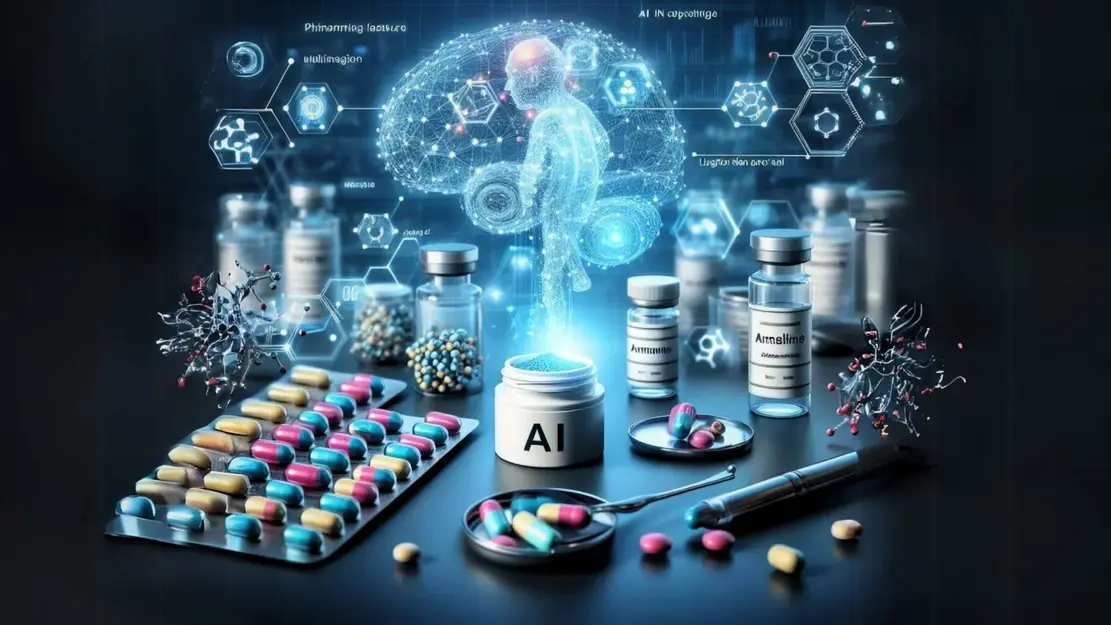
Artificial intelligence (AI) is revolutionizing diagnosis, personalized treatment, and operational efficiency in healthcare. From superhuman cancer detection systems in radiation scans to chatbots for early patient triage, the potential to improve outcomes is enormous. However, this massive technological wave is impacting the ever-changing landscape of healthcare compliance.
Data protection regulations, such as the Health Insurance Portability and Accountability Act (HIPAA) in the United States, the General Data Protection Regulation (GDPR) in Europe, and many other regions, govern the healthcare sector, which is considered one of the most highly regulated in the world. Legal and ethical compliance pose significant obstacles to the widespread adoption of these complex and life-saving AI tools. This article explores the complex landscape of AI compliance in healthcare and proposes practical, innovative solutions to create a future where innovation and compliance seamlessly converge.
Data Privacy and Security: Unavoidable Challenges
The reliance of AI in healthcare on protected health information is its greatest drawback. Training machine learning models requires massive amounts of high-quality, detailed data. Medical histories, genetic codes, medication lists, and imaging studies are all highly sensitive. Using this data for AI, even with good intentions, violates HIPAA data minimization and consent-for-specific purposes regulations. Traditional data anonymization methods are often considered foolproof, but they often fail. Advanced AI can potentially re-identify individuals in anonymized datasets, leading to serious compliance violations. The vast amounts of data transferred between systems for model training and validation significantly increase the attack surface for cyber threats, making strong security a technical and compliance requirement.
Algorithmic Discrimination and Bias:
Algorithmic bias in healthcare AI may pose the greatest misleading compliance risk. AI models are only as good as the data they are trained on. If historical healthcare data reveals human bias, disparities in care, or underrepresentation of specific demographic groups (e.g., race, gender, socioeconomic status), AI can learn and amplify these biases. This can lead to serious violations of anti-discrimination laws, including the Affordable Care Act. Algorithms based on data from white individuals can reduce the accuracy of heart disease diagnoses in Black individuals. Real-world examples have demonstrated how AI models can exacerbate racial bias in healthcare resource allocation. Fairness and equity are now legal requirements, requiring comprehensive bias audits throughout the AI lifecycle to prevent biased outcomes and legal consequences.
The Black-Box Problem and the Need for Explainability:
Many powerful AI models, including deep learning neural networks, are “black boxes.” This means they can make accurate predictions or recommendations, but the rationale and weighting of the criteria remain unknown even to their authors. This conflicts with physicians’ legal and ethical obligations to understand and justify patient treatments. If doctors cannot explain why AI prescribes chemotherapy, they cannot obtain informed consent. Regulatory agencies like the U.S. Food and Drug Administration (FDA) require transparency in medical device decisions to ensure safety and effectiveness. The “right to explain” in the GDPR makes explainable artificial intelligence (XAI) a must-have feature for any compliant medical AI system.
Fragmented and Evolving Regulations:
The regulatory landscape for medical AI is complex, fragmented, and constantly evolving. The U.S. Food and Drug Administration (FDA) is developing a new SaMD framework in the United States, but these frameworks are also evolving. Identifying AI tools as clinical decision support or controlled medical devices is crucial. In addition to the FDA, companies must also comply with the Health Insurance Portability and Accountability Act (HIPAA) and other national data protection laws. Global healthcare companies must comply with the European General Data Protection Regulation (GDPR), which imposes stricter requirements on informed consent and the “right to be forgotten,” further complicating the regulatory landscape. The lack of a single, clear, and uniform standard risks developers and healthcare providers investing in solutions that may not comply with the new regulations.
Solution 1: Use Technologies that Protect Privacy
Besides encryption and anonymization, the industry is using more advanced privacy technologies to address data privacy concerns. Federated learning changes the paradigm. Instead of centrally storing personal health information (PHI) in a high-risk data lake, federated learning sends AI models to the data source (e.g., a hospital’s secure server). The model learns locally based on the institution’s data, and only changes are sent to a central server for aggregation. This reduces data transmission and data leakage. Differential privacy adds calibrated “noise” to a dataset or query response, making it statistically unidentifiable to an individual while still enabling accurate AI training. Homomorphic encryption, the ultimate goal for secure data usage, is computationally intensive but allows calculations to be performed without decrypting the encrypted data.
Solution 2: A Strong AI Governance Framework
Compliance must be built into AI from the start. This requires a comprehensive, cross-functional AI governance framework. Policies, processes, and standards must cover the entire AI lifecycle, from data collection and model creation to deployment, monitoring, and decommissioning. A multidisciplinary AI ethics and compliance committee, consisting of IT and data scientists, legal experts, compliance officers, clinicians, and patient organizations, is crucial. This committee should conduct algorithmic impact assessments and fairness audits before deployment, monitor models for performance biases and anomalies, and provide documentation to regulators. Proactive governance streamlines compliance efforts from a reactive to a systematic approach.
Solution 3: Promote Explainable AI and Hardware-in-the-Loop (HIL) Models
The black-box problem requires the targeted development and use of Explainable Artificial Intelligence (XAI) methods. XAI methods can reveal which data features (e.g., X-ray pixel clusters or laboratory values) most influence model predictions. This helps clinicians understand and validate AI reasoning. The most compliant AI systems utilize a “human-in-the-loop” (HITL) architecture. This concept positions AI as a powerful assistant that provides data-driven recommendations but places the final decision with the clinician. This preserves human control over clinical decision-making, ensures accountability, enables informed consent, and prevents AI errors, thereby meeting legal and ethical standards.
Conclusion:
Fully compliant AI in healthcare is not easy, but it is crucial and possible. Navigating data privacy, algorithmic bias, transparency, and regulations is challenging, but not intractable. By leveraging advanced privacy-preserving technologies like federated learning, creating a rigorous and ethical AI governance framework from start to finish, and prioritizing explainability and human oversight in every application, healthcare institutions can avoid legal penalties and, through these strategies, earn the trust of patients and healthcare institutions. Trust is the ultimate currency for unlocking the true potential of AI and paving the way for a new era of smarter, more efficient, safer, more equitable, and more compliant healthcare.
FAQs:
1. How does HIPAA impact AI models?
AI models that create, receive, store, or transmit PHI must comply with HIPAA. Model construction, training data, and output require administrative, physical, and technical security. De-identified data is often used for training, but organizations must ensure it is protected against re-identification, and AI can help with this.
2. Can AI tools be held liable for medical errors?
Under current law, AI is not legally liable. The healthcare provider or institution using the tool is liable. Even when AI drives the tool, physicians must make the final decision. To mitigate legal risks, a “human-in-the-loop” paradigm and AI explainability are crucial.
3. What is the difference between AI fairness and accuracy?
AI accuracy assesses the overall predictive accuracy of a model. AI fairness measures the model’s accuracy across different demographic groups (e.g., race, gender, age). A model with 95% overall accuracy, but only 70% for minority groups, is inherently unfair and discriminatory.
4. Who ensures AI compliance in hospitals?
Responsibility for compliance is shared by all parties. AI developers must create safe, verifiable, and fair tools and provide transparency. Hospitals or health systems must conduct due diligence before purchasing, validate the models for their patient population, properly integrate them into clinical workflows, and regularly monitor their performance within their governance framework.
5. Which AI applications in healthcare are considered “low risk” for compliance?
AI applications not intended for diagnosis or treatment have fewer limitations. Examples include inventory management, billing and coding automation, non-clinical patient chatbots for appointment scheduling, and AI for predicting patient admissions and staff scheduling. The Health Insurance Portability and Accountability Act (HIPAA) and other data protection requirements apply to applications that process personal health information (PHI).


